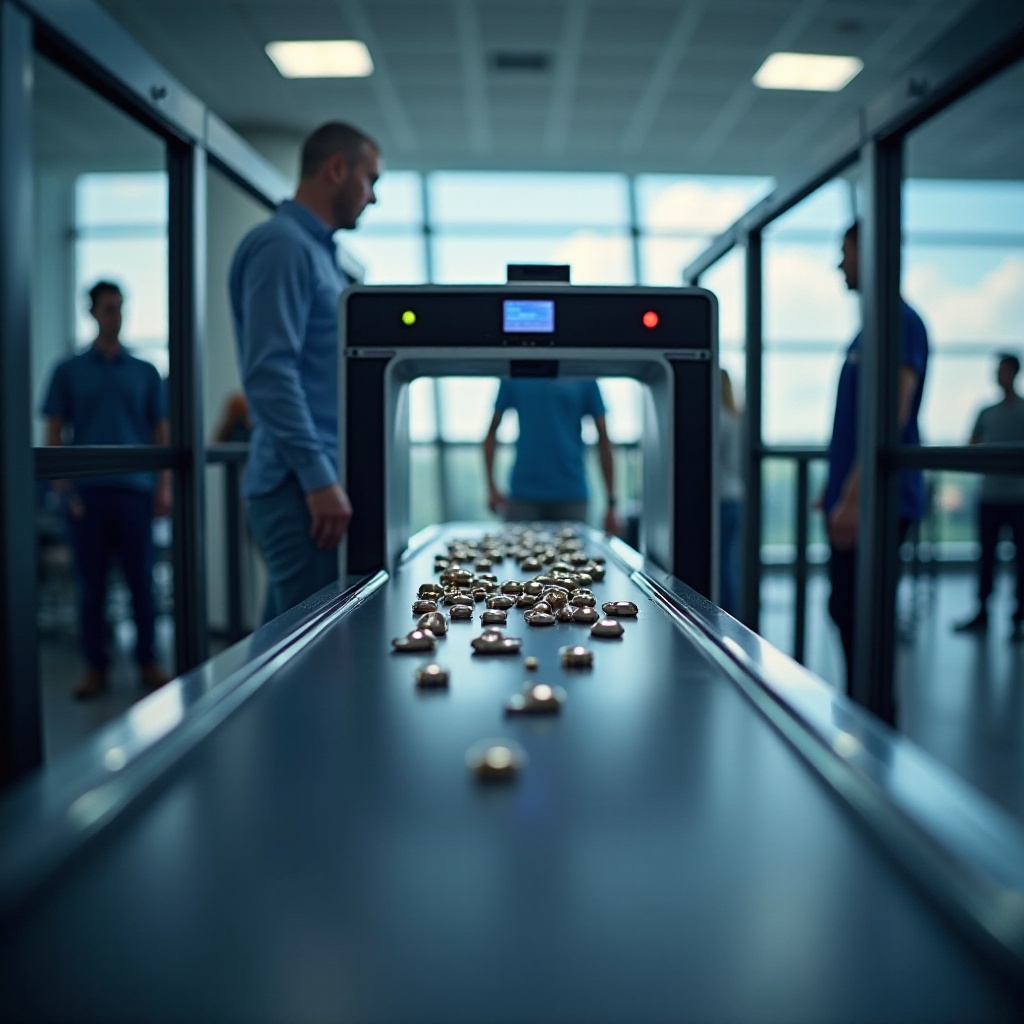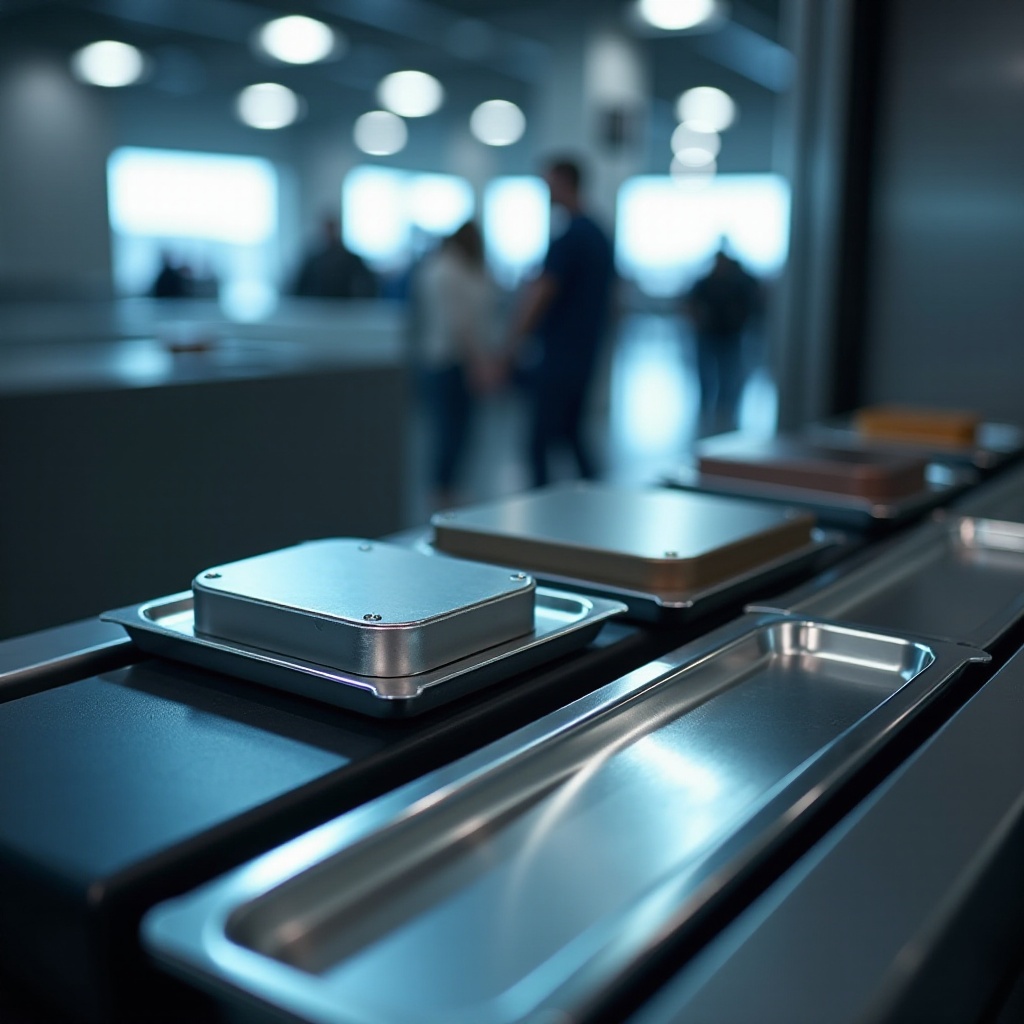Introduction
Traveling can be stressful, especially when it comes to airport security. One common concern for travelers is how TSA scanners handle metal objects like jewelry, electronics, and metal implants. Understanding how these scanners work, their limitations, and what to expect during security checks can make your travel experience smoother.
In this comprehensive guide, we will delve into how TSA scanners interact with metal objects, the different types of metals and their impact on these scanners, and what procedures you might encounter at the security checkpoint. We’ve also included tips for travelers to help you navigate airport security without a hitch.

What TSA Scanners Are and How They Work
Transportation Security Administration (TSA) scanners are essential tools for airport security. They detect prohibited items and ensure the safety of air travel. Two main types of scanners are commonly used: X-ray scanners and millimeter-wave scanners.
X-ray scanners are primarily used for scanning luggage and personal items. They emit low-dose radiation that passes through objects to create an image based on the varying densities. Dense materials like metal appear clearly, revealing concealed items such as weapons or electronics.
Millimeter-wave scanners, on the other hand, are used for screening passengers. These scanners emit non-ionizing radiofrequency waves that pass over the body. Any anomalies, including metal objects, appear as suspicious areas highlighted on a generic outline of a person.
Understanding the differences in how these scanners work helps travelers know what to expect during security screenings.
Types of Metals and Their Impact on TSA Scanners
Not all metals interact with TSA scanners in the same way. Different types of metals can affect the scanning process differently, influencing how you should prepare for a security check.
-
Ferromagnetic Metals:
These include iron, nickel, and cobalt. Ferromagnetic metals are highly detectable due to their magnetic properties. TSA scanners can easily identify items made from these metals. -
Non-Ferromagnetic Metals:
Metals like aluminum, copper, and brass are less detectable but can still reflect scanner signals, triggering an alert. These metals often require additional screening. -
Alloys:
Alloys such as stainless steel are common in everyday items like jewelry and medical implants. These metals vary in density and composition, which may impact how they show up on scanners.
Knowing what types of metals you’re carrying can help you anticipate how TSA scanners will interact with them and what precautions you might need to take.

Common Metal Items and TSA Scanning Procedures
TSA scanners frequently encounter various metal items. Here are some common examples and the typical procedures related to them:
-
Jewelry:
Small, non-invasive jewelry often doesn’t set off alarms. However, if jewelry is bulky, it might require removal and separate scanning. -
Watches:
Watches made of metal can trigger scanners, particularly if they contain intricate mechanisms. It’s often best to place them in a tray for separate scanning. -
Electronics:
Laptops, tablets, and cameras contain metal parts that appear clearly on X-ray scanners. Travelers are usually required to remove these items from their bags for a clear scan. -
Belts and Accessories:
Belts with significant metal components should be taken off and placed in a scanning tray to avoid triggering alarms.
These procedures help TSA personnel differentiate benign metal items from potential threats, ensuring everyone’s safety while minimizing inconvenience for passengers.
Limitations and Challenges of TSA Scanners with Metal Objects
While TSA scanners are effective, they have limitations and challenges, particularly with metal objects.
X-ray Scanners and Metal Objects
X-ray scanners excel at providing clear images of dense materials, but they can’t always differentiate benign items from threats. Dense clusters of metal or tightly packed bags can obscure items, necessitating manual inspection or rescreening.
Millimeter-Wave Scanners and Metal Detection
Millimeter-wave scanners can detect metals on a person’s body. However, they may struggle with small metal objects like screws or wires embedded in clothing or accessories. Additionally, these scanners can sometimes produce false alarms for benign items such as zippers or underwire bras, leading to unnecessary secondary screenings.
Despite these challenges, TSA scanners remain vital tools. The constant advancements in technology aim to address these limitations and increase the accuracy and efficiency of security screenings.
Tips for Travelers with Metal Items
Navigating TSA screenings with metal items can be hassle-free with a few simple strategies.
Packing Tips to Avoid TSA Issues
- Organization:
Keep metal items organized and easily accessible in your carry-on to reduce screening time. - Minimal Metal Clothing:
Wear clothing with minimal metal components to avoid setting off alarms. - Separate Electronics:
Place electronics in accessible spots in your luggage so you can easily remove them for scanning. - Declare High-Density Items:
Inform TSA agents of any dense metal objects, like medical implants or specialty equipment to facilitate smooth screening.
What to Do if a Metal Object Triggers an Alert
- Stay Calm:
Alerts are common and usually just require a quick secondary screening. - Follow Instructions:
TSA personnel will guide you through the process, which may include a wand screening or pat-down. - Communicate:
If you have medical implants or carry special equipment, inform TSA agents beforehand to streamline the process.
These proactive measures help ensure a smoother travel experience, reducing delays and unnecessary stress.
The Future of TSA Scanning Technology
The future looks promising for TSA scanning technology. Innovations focus on enhancing efficiency and accuracy, including advanced imaging techniques and AI integration.
- Computed Tomography (CT) Scanners:
These provide detailed 3D images, enabling better differentiation of items within bags. - AI Integration:
Artificial intelligence can analyze scan data in real-time, quickly identifying potential threats with high precision. - Walk-Through Scanners:
Newer, less invasive machines allow passengers to be screened without the need to remove items, streamlining the process.
These advancements promise to make security screenings quicker and more reliable, benefiting both travelers and security personnel.

Conclusion
Understanding how TSA scanners interact with metal objects can simplify the airport security process. While there are limitations to current scanner technology, practical packing tips and clear communication with TSA personnel can mitigate potential delays. Future advancements in scanning technology promise even more efficient and accurate screenings, making air travel safer and more convenient.
Frequently Asked Questions
Can TSA scanners see through thick metal objects?
TSA scanners can see through metal objects to an extent, but thick or densely packed metal can obscure other items. These instances usually necessitate secondary screening or manual inspection.
Are all types of metals detectable by TSA scanners?
Most metals are detectable. However, their detectability varies based on composition and density. Ferromagnetic metals are highly detectable, while non-ferromagnetic metals and alloys might require additional screening.
What are the common metal items that cause TSA alerts?
Common items that cause alerts include large jewelry, belts with metal buckles, metal implants, watches, and electronics. Properly organizing and declaring these items can streamline the screening process.

